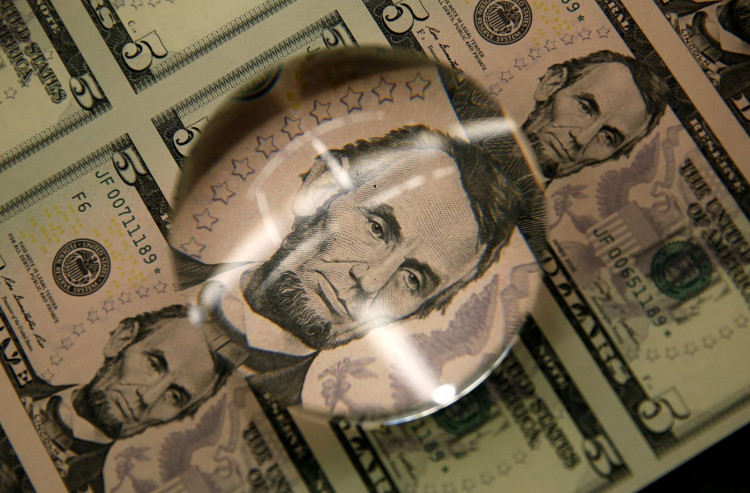Amid resilient U.S. economic data over the summer, the Federal Reserve appears increasingly confident in achieving a historically rare "soft landing" - curbing inflation without triggering an economic downturn.
On Friday, September 8th, the New York Fed, after a two-year hiatus, relaunched its real-time GDP estimation model, Nowcast. It currently projects a third-quarter GDP growth rate of about 2.2% annually.
Recently, the closely-watched unofficial forecast from the Atlanta Fed was even more optimistic, projecting an annualized GDP growth rate of up to 5.6% for the third quarter. Any growth rate exceeding 3.2% would mark the strongest quarterly performance since the U.S. began its rapid recovery from the pandemic in 2021.
Analysts have noted that many economists have been revising their U.S. GDP forecasts upward following recent stronger-than-expected data releases, ranging from consumer spending to housing investments.
Goldman Sachs this week further reduced its 12-month recession probability for the U.S. from 20% to 15%. Santander Capital Markets' chief U.S. economist mentioned that robust consumer spending in June and July makes a 5% GDP growth in the third quarter seem high but not out of reach.
The U.S. government will release official third-quarter growth data at the end of October. Before that, Wall Street is already anticipating that the Fed, in its economic forecast and dot plot outlook to be released on September 20th, will revise its forward-looking U.S. economic growth for the year to 1.8% or 2%. This would double the 1% growth forecast from June, a stark contrast to the Fed's March prediction of a U.S. economic downturn this year.
Omair Sharif, president of consulting firm Inflation Insights, suggested that the Fed might lower its unemployment rate outlook in September. However, its accelerated economic growth forecast could lead monetary policy officials to reduce next year's rate cut expectations from 100 basis points to 75.
The money market currently places a high probability of 93% on the Fed holding off on a rate hike in September, aligning with recent comments from Fed officials.
For instance, John Williams, the third-ranking official at the Fed and the permanent voting member from the New York Fed, stated that their monetary policy is in a "very good place."
Even the hawkish Fed Governor Christopher Waller acknowledged the "very good" economic data from the past week, suggesting the Fed can "sit tight" without any immediate action.
However, the upcoming dot plot from the Fed might still hint at the possibility of another rate hike before year-end. The money market's betting odds have hovered around 43% for days, indicating significant uncertainty.
Key officials, including Fed Chairman Jerome Powell, have mentioned that if economic data remains resilient, there's still a chance for a slight policy tightening this year, potentially another 25 basis point rate hike. For a soft landing, the Fed would need to see further slowdowns in the U.S. labor market and overall demand.
Some officials have warned that the Fed has been misled by "false dawns" in inflation trends in recent years. They advocate caution against prematurely declaring the end of monetary tightening policies. As a result, market expectations for higher interest rates maintained by central banks in Europe and the U.S. for a more extended period have surged.
Many analysts believe the Fed's soft landing outlook is unrealistic, predicting a much bleaker economic growth for the U.S. in the fourth quarter.
Jonathan Millar, a senior economist at Barclays, mentioned that expenditures brought forward to the third quarter will be deducted from fourth-quarter expenditures. Additionally, under the continued influence of the Fed's highest interest rates in twenty-two years, the resumption of student loan payments and credit tightening at year-end could start dragging down the economy.
Anna Wong, Bloomberg's chief U.S. economist, candidly stated that the strong third-quarter GDP performance doesn't necessarily indicate a higher likelihood of a soft landing. In fact, it might increase the chances of a negative GDP in the fourth quarter for the U.S.
Thomas Feltmate, a senior economist at TD Bank Group, pointed out that with over 27 million U.S. student loan borrowers starting to make monthly repayments, squeezing consumer spending, and the current tight credit conditions, economic growth is likely to slow in the fourth quarter.
Nick Timiraos, a journalist often seen as the "Fed's mouthpiece" and dubbed the "new Fed news agency," wrote two weeks ago that although U.S. inflation has quickly dropped from 9.1% to 3.2%, the Fed's challenges seem to have just begun as it approaches the "last mile of the most aggressive rate-hiking process in forty years." The internal divergence is growing:
The market currently sees three potential paths for the Fed: continue raising rates to quickly bring inflation down to 2%; maintain the current rate level, taking about three years to bring inflation down to 2%; or simply raise the inflation target to 3%.
Timiraos believes that the Fed's upcoming decisions will have significant implications for consumers, markets, and the economy. They will also greatly influence whether Fed Chairman Powell can achieve the so-called "soft landing" - defeating inflation without triggering an economic recession.






